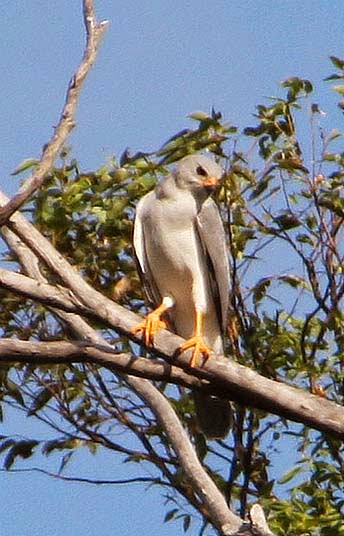 |
| Tolkien having a dip |
 |
| The roofs of the coops are replaced with wriggly tin |
 | |
| The end of the Lap Swamp |
We seem to have got the chook production line working well now. We have two brooders, two pullet runs and two main runs, all of which are usually full. Every 3-4 weeks I take another batch of eggs to Cat and her incubators and three weeks later she hands me back another batch of chicks. They spend their nights in the brooders and days in the 'Chick run' until they become too big and need to be moved into a pullet run at about 4-weeks old. They will stay in the pullet run for the next 8-12 weeks at which point they will either go off for sale, or if they are of particularly fine quality they may join the breeding flocks.
 |
| Two chicks taking up residence on the table. |
 |
| A pair of Salmon Faverolle Cockerels enjoying the afternoon sun. |
Even if they do spend a great deal of time and effort digging up my flower beds!
 |
| A trio of 3-week old chicks taking a rest from digging up the flower beds! |
 |
| I thought we had a twister on the way, but just rain. |
This little chap was spotted by Julia Wallace when she and Martin came to visit. The poor little fellah had been rooted out of the undergrowth by the dogs and had taken cover in the upper branches of the Grevillea whilst the dogs continued to search below. It's not a mouse, it's a Grassland Melomys, although I have no idea what the big differences are. You will all be glad to know that I called the dogs in and the Melomys was able to go back to enjoying the undergrowth.
 |
| A Grassland Melomys understandably scared watching the dogs searching for him below the Grevillea. |
Regulars (Seen at least x5 per week)
Australian Magpie
Bar-shouldered Dove
Bronzewing
Double-barred Finch
Dusky Moorhen
Galah
 |
| Galahs on the bird feeder |
Grey Butcherbird
Magpie Lark
Noisy Miner
Pacific Black Duck
Peaceful Dove
Pied Currawong
Plumed Whistling Duck
Purple Swamphen
Rainbow Lorikeet
Striated Pardalote
Sulphur Crested Cockatoo
Torresian Crow
Welcome Swallow
Wood Duck
Willy Wagtail
Wood Duck
Yellow-faced Honeyeater
Common (Seen at least twice a week)
Black-faced Cuckoo Shrike
Eastern Whipbird
Grey Fantail
Laughing Kookaburra
Noisy Friarbird
Pale-headed Rosella
Rainbow Bee Eater
White-throated Gerygone
White-throated Honeyeater
Uncommon (Seen 2-5 times a month)
Blue-faced Honeyeater
Brown Honeyeater
Eastern Yellow Robin
Figbird
Golden Whistler
Grey Shrike-thrush
 |
| Grey Shrike Thrush |
Hardhead Duck
King Parrot
Lewins Honeyeater
Olive-backed Oriole
 |
| Male Olive-backed Oriole |
 |
| Female Olive-backed Oriole |
Red-backed Fairy Wren
Rufous Whistler
Spangled Drongo
White-throated Treecreeper
Yellow-tailed Black Cockatoo
Rare (Seen only once in the month)
Brown Cuckoo Dove
Collared Sparrowhawk
Crested Pigeon
Dollarbird
Fan-tailed Cuckoo
Grey Goshawk
 |
| Grey Goshawk |
Little Wattlebird
Hardhead
 |
| Hardhead or White-Eyed Duck |
Mallard
Rose Robin
Satin Flycatcher
 |
| Satin Flycatcher |
Scaly-breasted Lorikeet
Straw-necked Ibis
Varied Sitella
Wedge-tailed Eagle
Whistling Kite
White-bellied Cuckoo Shrike
Which is 62-species, well, it was a quiet month.
